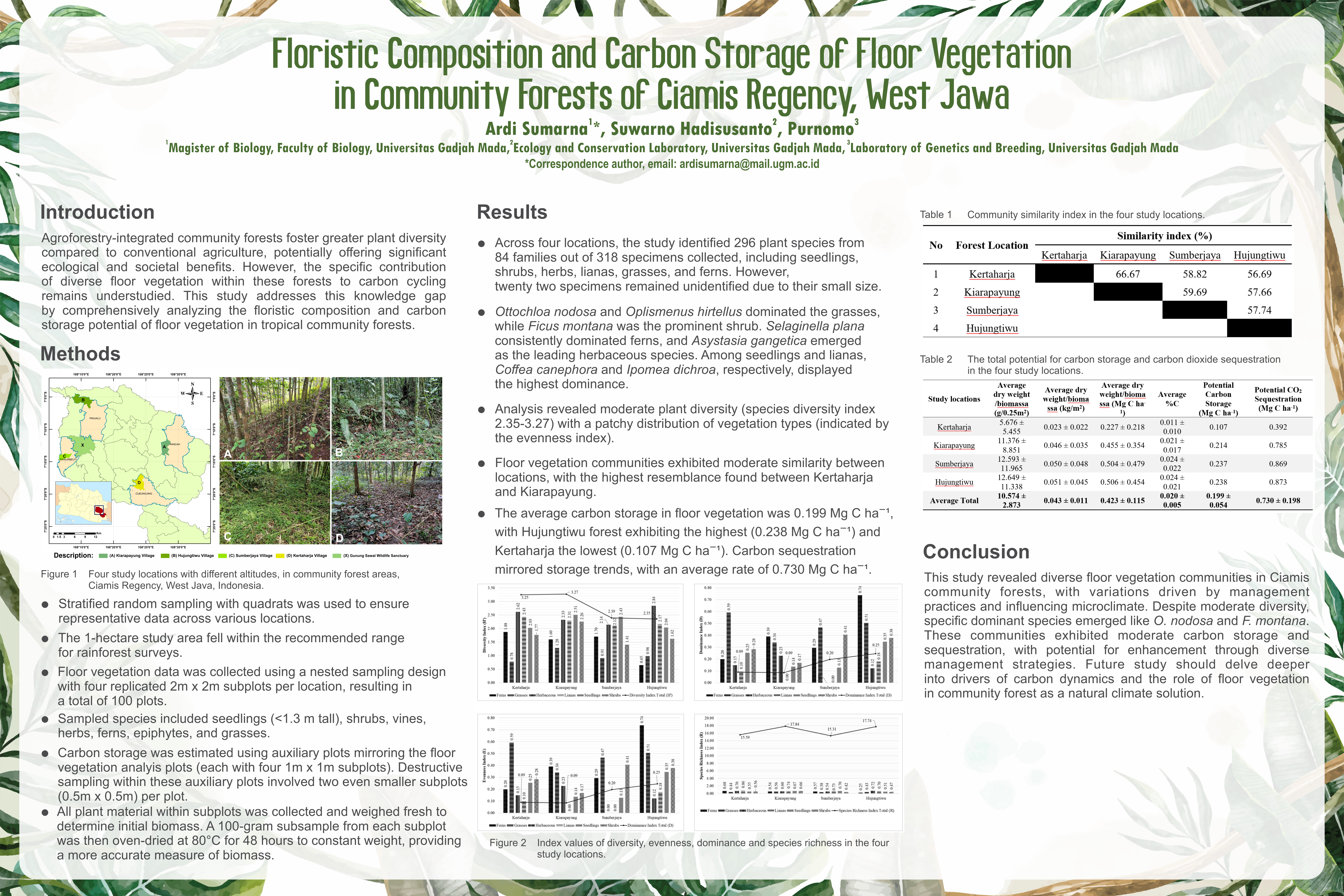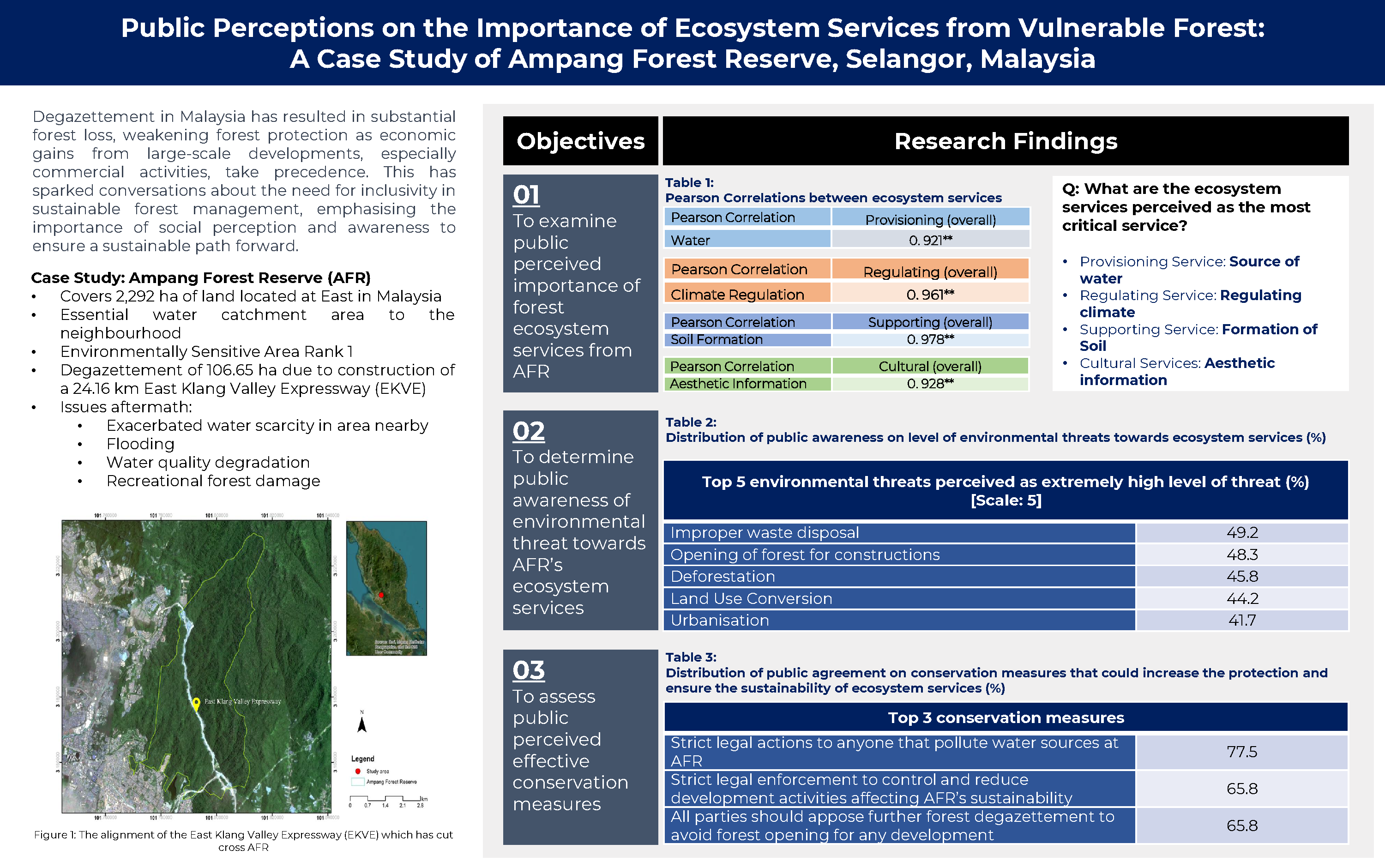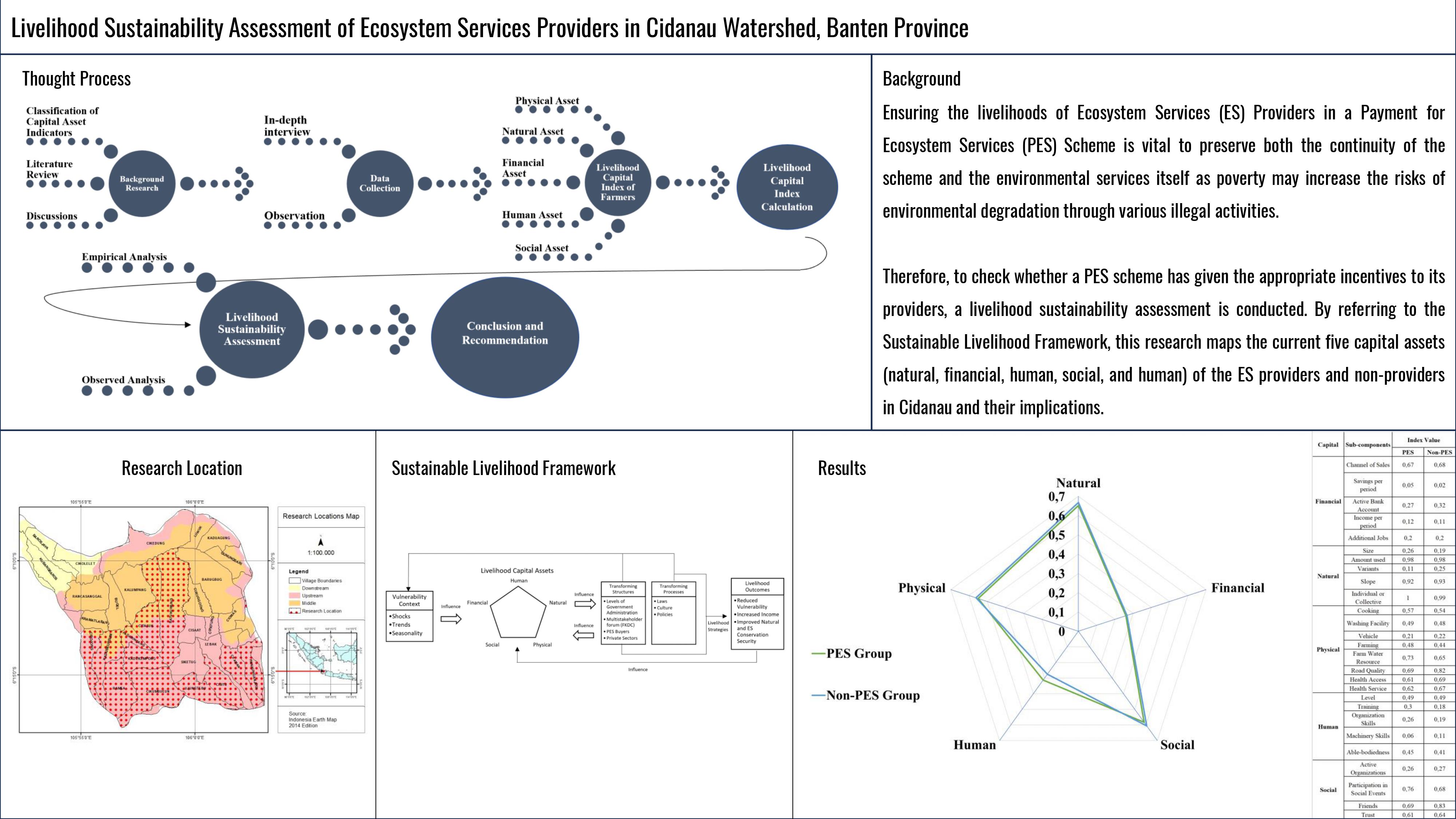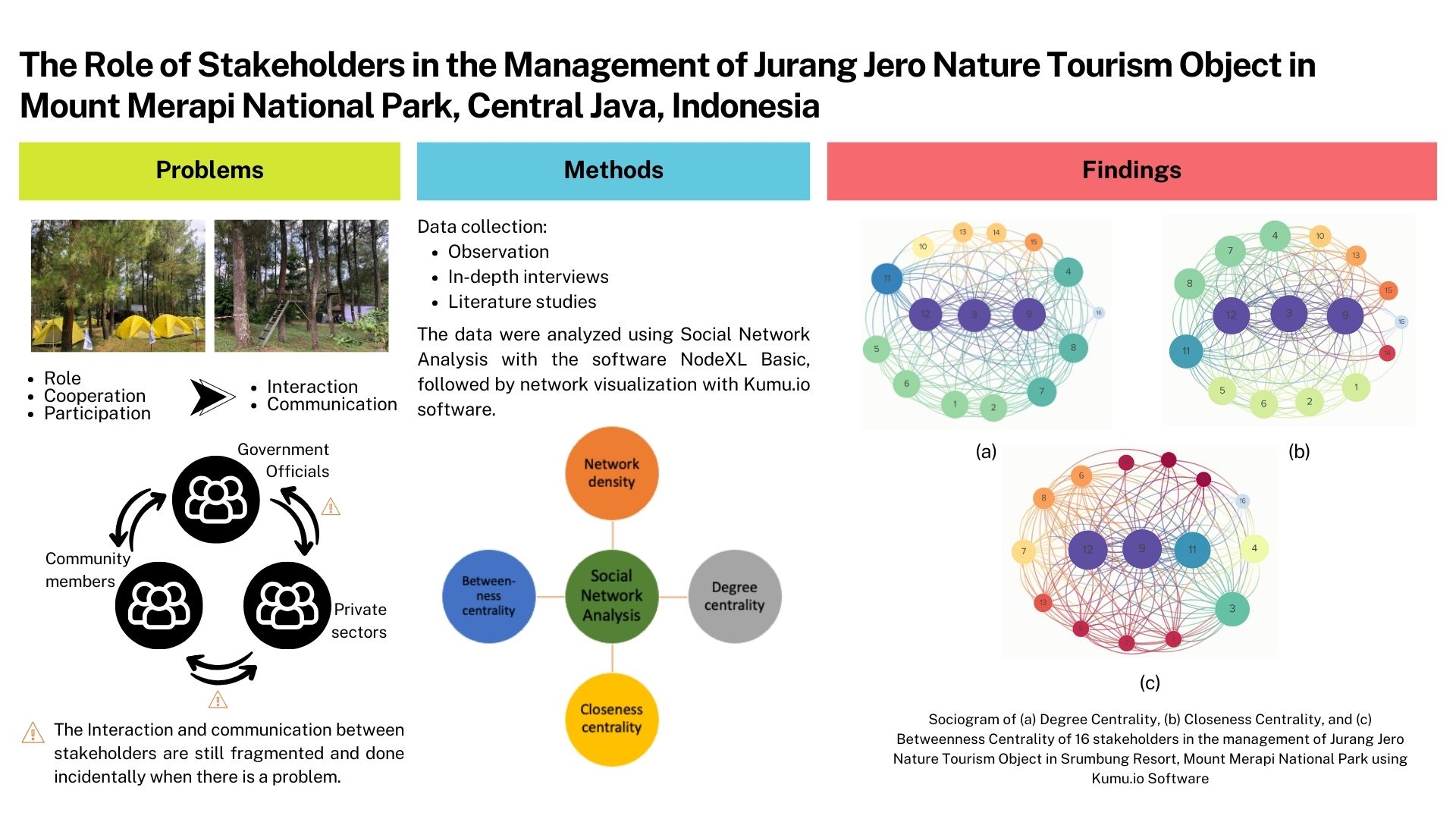Community Forest Scheme: Measuring Impact in Livelihood Case Study Lombok Tengah Regency, West Nusa Tenggara Province
Abstract
Community forest (Hutan Kemasyarakatan/HKm) is one of the social forestry scheme policies stipulated by the Indonesian government to give partial rights to the community to be able to manage the state forest area. This scheme has implemented for more than ten years, and that includes areas in Lombok Tengah Regency. This research aims to analyze the impact of social forestry scheme policies on the economy of communities around forests and conducted in May–August 2019. By the HKm scheme, the community can manage up to 0.5 ha forest area per person and expected to increase livelihood benefits as well as improve conservation outcomes such as decreasing illegal logging and planting more trees. Based on the study conducted, the community has experienced an increase in livelihoods as well as improvements in environmental conditions. Indicator used in measuring community welfare is per capita income, which noted in the study area is IDR3,609,603 annually and inequality (Gini coefficient), which noted less than 0.4 or in the 'low' category. This study shows that the Gini coefficient in the research location is high (0.530). When compared, the income gap in the group of respondents who got the HKm program was better than the group of respondents who did not. The Gini coefficient data shows that the HKm program quite succeeds in target to increase livelihood benefits. The HKm program expected to improve the level of income inequality (Gini coefficient) from 0.483 (HKm) compared to 0.566 (non-HKm). These findings are important messages to further the HKm scheme policies.
References
Akhmad, Alyas, & Amir. (2019). The effect of economic growth and income inequality on poverty in Indonesia. IOSR Journal of Economics and Finance (IOSR-JEF), 9(4), 20–26.
Azwar, S. (2016). Metode penelitian. Jakarta: Pustaka Pelajar.
Birgantoro, B. A., & Nurrochmat, D. R. (2007). Forest resource utilization by people in KPH Banyuwangi Utara. Jurnal Manajemen Hutan Tropika, 13(3), 172–181.
[BPS] Badan Pusat Statistik. (2016). Potret awal tujuan pembangunan berkelanjutan (Sustainable development goals) di Indonesia. Jakarta: Badan Pusat Statistik.
[BPS] Badan Pusat Statistik. (2018). Tingkat Ketimpangan Pengeluaran Penduduk Nusa Tenggara Barat Maret 2018. Berita Resmi Statistik (No. 49/07/52/Th. II), p. 7.
[BPS] Badan Pusat Statistik. (2019a). Profil Kemiskinan di Indonesia. Berita Resmi Statistik (No.56/07/Th. XXII), p. 12.
[BPS] Badan Pusat Statistik (2019b). Tingkat Ketimpangan Pengeluaran Penduduk Nusa Tenggara Barat Maret 2019. Berita Resmi Statistik (No. 45/07/52/Th. III), p. 7.
[Dephutbun] Departemen Kehutanan dan Perkebunan. (2000). Pedoman survei sosial ekonomi kehutanan Indonesia (PSSEKI). Bogor: Departemen Kehutanan dan Perkebunan Republik Indonesia.
Dhruba-Bijaya, G., Sheng-Kui, C., Qijie, G., Zengrang, X., Ling-En, W., Bhandari, J., …, & Xiaochang, C. (2015). Can community forestry play a major role in the socio-economic enhancement of poor users in Nepal? Bulgarian Journal of Agricultural Science, 21(2), 378– 383.
[DJPSKL] Direktorat Jenderal Perhutanan Sosial dan Kemitraan Lingkungan. (2019). Sistem navigasi perhutanan sosial. Retrieved from SiNav PS: http://sinav.perhutanan-sosial.id/main/piaps
[DPKPS] Direktorat Penyiapan Kawasan Perhutanan Sosial. (2019). Laporan kinerja Direktorat Penyiapan Kawasan Perhutanan Sosial tahun 2018. Jakarta: Direktorat Penyiapan Kawasan Perhutanan Sosial, Direktorat Jenderal Perhutanan Sosial dan Kemitraan Lingkungan, Kementerian Lingkungan Hidup dan Kehutanan.
Feurer, M., Gritten, D., & Than, M. M. (2018). Community forestry for livelihoods: Benefiting from Myanmar's mangroves. Forests, 9(3), 150. https://doi.org/10.3390/f9030150
Fisher, M., Moeliono, M., Mulyana, A., Yuliani, E., Adriadi, A., Kamaluddin, …, & Sahide, M. A. (2018). Assessing the new social forestry project in Indonesia: Recognition, livelihood, and conservation? International Forestry Review, 20(3), 346 –361. https://doi.org/10.1505/146554818824063014
Iskandar. (2015). Hukum kehutanan, prinsip hukum pelestarian lingkungan hidup dalam kebijakan pengelolaan kawasan hutan berkelanjutan. Bandung: Mandar Maju.
Kaskoyo, H., Mohammed, A. J., & Inoue, M. (2014). Present state of community forestry (Hutan Kemasyarakatan/HKm) program in a protection forest and its challenges: Case study in Lampung Province, Indonesia. Journal of Forest Science, 30(1), 15–29. https://doi.org/10.7747/JFS.2014.30.1.15
Kay, S., Rega, C., Moreno, G., den Herder, M., Palma, J. H., Borek, R., ..., & Herzog, F. (2019). Agroforestry creates carbon sinks whilst enhancing the environment in agricultural landscapes in Europe. Land Use Policy, 83, 581–593. https://doi.org/10.1016/j.landusepol.2019.02.025
Khanal, B. (2011). Is community forestry decreasing inequality among its users? Study of impact of community forestry on income distribution among different users groups in Nepal. International Journal of Social Forestry, 4(2), 139–152.
[KLHK] Kementerian Lingkungan Hidup dan Kehutanan. (2019a). Peraturan Menteri Lingkungan Hidup dan Kehutanan RI Nomor 41/MENLHK/SETJEN/KUM.1/7/ 2019 tentang Rencana Kehutanan Tingkat Nasional Tahun 2011–2030. Jakarta: Kementerian Lingkungan Hidup dan Kehutanan, Republik Indonesia.
[KLHK] Kementerian Lingkungan Hidup dan Kehutanan. (2019b). Status hutan dan kehutanan Indonesia 2018. Jakarta: Kementerian Lingkungan Hidup dan Kehutanan, Republik Indonesia.
Larson, A. M. (2004). Formal decentralisation and the imperative of decentralisation 'from below': A case study of natural resource management in Nicaragua. The European Journal of Development Research, 16(1), 55-70. https://doi.org/10.1080/09578810410001688734
Maipita, I., & Wahyudi, S. T. (2018). Income distribution and inequality in Indonesia: Study on middle-class household. Jurnal Ekonomi Pembangunan, 18(1), 131– 141. https://doi.org/10.23917/jep.v18i1.3974
Maryudi, A., Devkota, R. R., Schusser, C., Yufanyi, C., Salla, M., Aurenhammer, H., …, & Krott, M. (2012). Back to basics: Considerations in evaluating the outcomes of community forestry. Forest Policy and Economics, 14(1), 1–5. https://doi.org/10.1016/j.forpol.2011.07.017
Nandini, R., Kusumandari, A., Gunawan, T., & Sadono, R. (2016). Impact of community forestry policy on farmers in Rinjani protected forest area. Jurnal Ekonomi dan Kebijakan (JEJAK), 9(1), 34–39. https://doi.org/10.15294/jejak.v9i1.6653
Nurrochmat, D. R. (2005). The impacts of regional autonomy on political dynamics, socio-economic, and forest degradation. Case of Jambi-Indonesia. Goettingen: Cuvillier Verlag.
Nurrochmat, D. R., Darusman, D., & Ekayani, M. (2016). Kebijakan pembangunan kehutanan dan lingkungan. Teori dan implementasi. Bogor: IPB Press.
Nurrochmat, D. R., Hasan, M. F., Suharjito, D., Hadianto, A., Ekayani, M., Sudarmalik, …, & Ryandi, E. D. (2012). Ekonomi politik kehutanan. Mengurai mitos dan fakta pengelolaan hutan (2nd ed.) (D. R. Nurrochmat, & M. F. Hasan, Eds.) Jakarta: INDEF.
Nurrochmat, D. R., Massijaya, M. Y., Jaya, I. S., Abdullah, L., Ekayani, M., Astuti, E. W., & Erbaugh, J. T. (2019). Promoting community forestry to reduce deforestation surrounding Gunung Rinjani National Park in Central Lombok, Indonesia. IOP Conference Series: Earth and Environmental Science. 285. IOP. https://doi.org/10.1088/1755-1315/285/1/012014
Nurrochmat, D. R., Solihin, I., Ekayani, M., & Hadianto, A. (2010). Neraca pembangunan hijau, konsep & implikasi bisnis karbon tata air di sektor kehutanan. Bogor: IPB Press.
Porter-Bolland, L., Ellis, E. A., Guariguata, M. R., Ruiz-Mallén, I., Negrete-Yankelevich, S., & Reyes-García, V. (2012). Community managed forests and forest protected areas: An assessment of their conservation effectiveness across the Tropics. Forest Ecology and Management, 268, 6 –17. https://doi.org10.1016/j.foreco.2011.05.034
Saptyuningsih, E., Diswandi, D., & Jaung, W. (2019). Does social capital matter in climate change adaptation? A lesson from agricultural sector in Yogyakarta, Indonesia. Land Use Policy. https://doi.org/10.1016/j.landusepol.2019.104189
Shrestha, K. K., & McManus, P. (2007). The embeddedness of collective action in Nepalese community forestry. Small-scale Forestry, 6(3), 273–290. https://doi.org/10.1007/s11842-007-9020-4
Wulandari, C., & Kurniasih, H. (2019). Community preferences for social forestry facilitation programming in Lampung, Indonesia. Forest and Society, 3(1), 114–132. https://doi.org/10.24259/fs.v3i1.6026
Wulandari, C., Bintoro, A., Rusita, R., Santoso, T., Duryat, D., Kaskoyo, H., …, & Budiono, P. (2018). Community forestry adoption based on multipurpose tree species diversity towards to sustainable forest management in ICEF of University of Lampung, Indonesia. Biodiversitas Journal of Biological Diversity, 19(3). https://doi.org/10.13057/biodiv/d190344.
Authors

This work is licensed under a Creative Commons Attribution 4.0 International License.
Jurnal Manajemen Hutan Tropika is an open access journal which means that all contents is freely available without charge to the user or his/her institution. Users are allowed to read, download, copy, distribute, print, search, or link to the full texts of the articles in this journal without asking prior permission from the publisher or the author. This is in accordance with the Budapest Open Access Initiative (BOAI) definition of open access.








